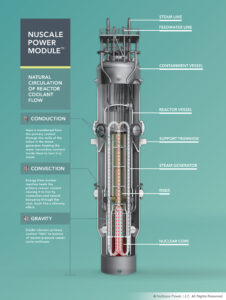Nuclear Power Ghana reached an agreement to deploy a small modular reactor to deliver clean electricity in August, just five weeks ahead of an announcement at COP29 about the swelling number of signatories to the Declaration to Triple Nuclear Energy by 2050. The rise of modular reactors and the Declaration are the latest signs of global momentum building behind atom splitting as a form of climate tech. It is a shift apace in wealthy and low-income countries alike. At COP29 in November, six new signatories to the Declaration brought the total to 31, nearly half of which are low- and middle-income countries (as classified by the World Bank, those with a gross national income per capita of USD $14,005 or less).
“With new signatories from emerging economies, some pursuing nuclear energy for the first time, we’re seeing growing recognition that nuclear energy can play a vital role in increasing energy access and security, while equipping emerging economies with the tools they need for successful development. It will not be easy, however, and we must find innovative ways to enable the rapid, safe, and secure scale up,” Malwina Qvist, Director of the Nuclear Energy Program at the non-profit Clean Air Task Force, said in a statement.
The Declaration was introduced in 2023 at COP28, calling on global financial institutions to integrate nuclear energy into their lending policies. At this year’s Climate Week in New York, 14 financial institutions endorsed it, including Bank of America, Barclays, and Citi. This year at COP29, the United States announced plans to add 35 GW of nuclear capacity by 2035, accelerating to 15 GW annually by 2040. This framework outlines steps for the government, industry, and power customers to scale nuclear energy effectively.
Small modular reactors headed for LMICs
Prior to COP29, Nuclear Power Ghana reached an agreement with the US nuclear technology project developer Regnum Technology Group to deploy a NuScale VOYGR-12 small modular reactor plant. at the US-Africa Nuclear Energy Summit in Nairobi, Kenya. The two companies plan to form a subsidiary to manage Africa’s first commercial advanced light-water small modular reactor plant. If the plant is deployed, Ghana will become the third African nation to produce electricity from nuclear fission, after Egypt and South Africa.
“Ghana and many other African countries are pursuing nuclear energy to achieve their economic development, energy security, and decarbonization goals,” Aleshia Duncan at the US Department of Energy’s Office of Nuclear Energy says.
In a statement following the summit, the US DoE praised small modular reactors as a clean technology. These reactors offer versatile solutions with compact designs, adjustable power output, and the ability to complement renewable energy. They serve both urban and remote communities and provide benefits beyond electricity generation, the DoE says.
Small modular reactors explained

Image: NuScale (CC BY-SA 3.0)
The United States has poured $579 million into the design and licensing of NuScale’s VOYGR small modular reactor, and it is the only design certified by the U.S. Nuclear Regulatory Commission at 50 MW per module. A proposed upgrade to 77 MW is under review. The next US-Africa Nuclear Energy Summit, planned for July 2025 in Rwanda, should focus on small modular reactors, according to the DoE. With global attention on these reactors, it helps to understand more about them.
Advanced small modular reactors can range in capacity from tens to hundreds of megawatts. They feature compact designs, cost less, can be sited more flexibly, power can be added incrementally, they are safeguarded, secure and have minimized the risk of weapons proliferation, the DoE says. Modular plants have a range of uses, as well. They can generate electricity and process heat, desalination, and industrial applications.
In the case of NuSCale’s VOYGR, each plant can house up to 12 modules, each about one-third of the size of a traditional reactor. Its design allows passive coolng, without the need for additional water, power or even operator action, the DoE says. That safety feature is key and could lead to a reduction in the emergency zone needed around the plant, which reduces the plant’s footprint.
Striking a nuclear balance
In Africa, Nigeria is the latest signatory to the Declaration, joining Kenya and Ghana in the pledge to triple their nuclear energy capacity by 2050. Their capacity at the moment is zero, however.
“The world is aligning around these clear realities: We need much more energy than we currently have, it needs to be reliable, and we need to get it without increasing greenhouse gas emissions,” Qvist says. “Tripling nuclear capacity by 2050 would go a long way towards striking that balance, offering zero-carbon electricity, heat, and fuel around the clock and accelerating decarbonization timelines by up to a decade.”

